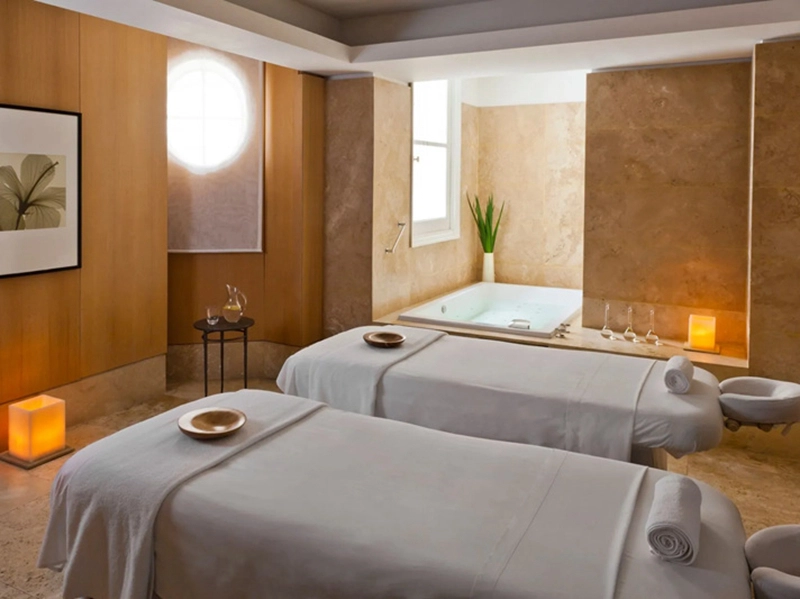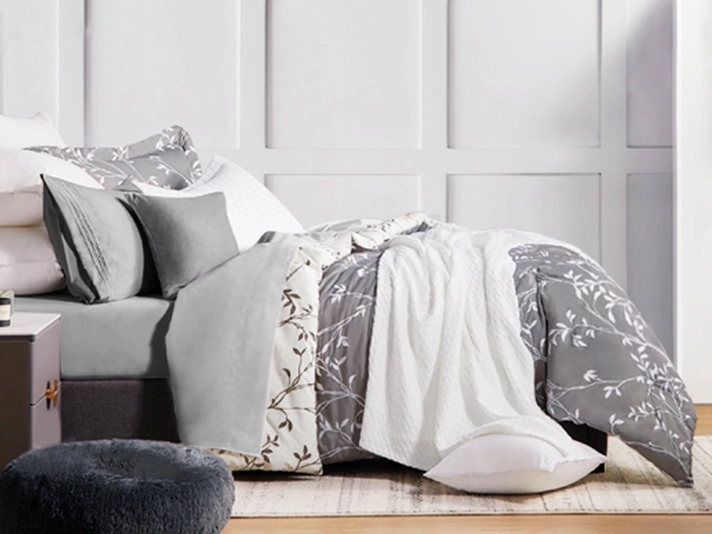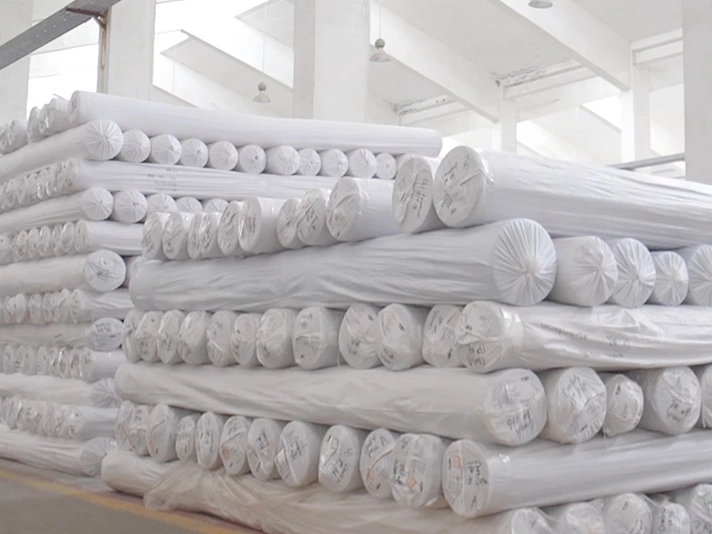More Language
Untranslated
Jun.25, 2024 06:06
Back to list
Common Bed Sheet Types Utilized in Healthcare Settings
Types of Bed Sheets Used in Hospitals Ensuring Comfort and Hygiene
In the healthcare environment, bed sheets play a crucial role in patient comfort, hygiene, and overall care. Hospitals utilize various types of bed sheets to cater to specific needs, ensuring a balance between functionality, durability, and patient well-being. This article delves into the different types of bed sheets commonly used in hospital settings.
1. Cotton Sheets The most common choice for hospitals is 100% cotton sheets due to their breathability and softness. They absorb moisture effectively, reducing the risk of skin irritation, and are machine-washable, making them easy to maintain in a high-sterility environment. Additionally, cotton's natural fibers are less prone to static electricity, which can be uncomfortable for patients.
2. Polyester/Cotton Blend Sheets A blend of polyester and cotton offers a more durable alternative. These sheets resist wrinkling, fading, and shrinking, which is beneficial for busy hospital laundry departments. However, they may not be as breathable as pure cotton, which could affect patient comfort.
3. Flannel Sheets During colder months, hospitals often use flannel sheets for their warmth and insulation. Made from a napped fabric, usually cotton, flannel sheets provide an extra layer of comfort without compromising breathability.
4. Waterproof Sheets To protect mattresses from bodily fluids and ensure hygiene, hospitals employ waterproof or moisture-resistant sheets Waterproof Sheets To protect mattresses from bodily fluids and ensure hygiene, hospitals employ waterproof or moisture-resistant sheets Waterproof Sheets To protect mattresses from bodily fluids and ensure hygiene, hospitals employ waterproof or moisture-resistant sheets Waterproof Sheets To protect mattresses from bodily fluids and ensure hygiene, hospitals employ waterproof or moisture-resistant sheets
Waterproof Sheets To protect mattresses from bodily fluids and ensure hygiene, hospitals employ waterproof or moisture-resistant sheets Waterproof Sheets To protect mattresses from bodily fluids and ensure hygiene, hospitals employ waterproof or moisture-resistant sheets types of bed sheets used in hospital. These are typically made from materials like vinyl, TPU (thermoplastic polyurethane), or polyester with a waterproof backing. While they prevent liquid penetration, they should be designed to allow air circulation to avoid skin maceration.
5. Anti-bacterial Sheets To combat hospital-acquired infections, some hospitals use anti-bacterial or antimicrobial bed sheets. These sheets are treated with substances that inhibit the growth of bacteria, fungi, and other microorganisms, enhancing infection control measures.
6. Fitted Sheets Fitted sheets with elastic corners are standard in hospitals as they stay in place, reducing the need for constant readjustment and ensuring a secure fit on hospital beds with various mattress sizes.
7. Stretch Sheets Designed to accommodate the movement of medical equipment or patients, stretch sheets are made from materials like polyester and spandex. They allow for a snug fit, preventing wrinkles and bunching, and facilitate easier bed-making for hospital staff.
In conclusion, the selection of bed sheets in hospitals is a strategic decision influenced by factors such as patient comfort, hygiene maintenance, and ease of laundering. By understanding the properties and benefits of each type, healthcare facilities can create a nurturing and safe environment for patients. After all, a comfortable bed is an essential component of the healing process.
types of bed sheets used in hospital. These are typically made from materials like vinyl, TPU (thermoplastic polyurethane), or polyester with a waterproof backing. While they prevent liquid penetration, they should be designed to allow air circulation to avoid skin maceration.
5. Anti-bacterial Sheets To combat hospital-acquired infections, some hospitals use anti-bacterial or antimicrobial bed sheets. These sheets are treated with substances that inhibit the growth of bacteria, fungi, and other microorganisms, enhancing infection control measures.
6. Fitted Sheets Fitted sheets with elastic corners are standard in hospitals as they stay in place, reducing the need for constant readjustment and ensuring a secure fit on hospital beds with various mattress sizes.
7. Stretch Sheets Designed to accommodate the movement of medical equipment or patients, stretch sheets are made from materials like polyester and spandex. They allow for a snug fit, preventing wrinkles and bunching, and facilitate easier bed-making for hospital staff.
In conclusion, the selection of bed sheets in hospitals is a strategic decision influenced by factors such as patient comfort, hygiene maintenance, and ease of laundering. By understanding the properties and benefits of each type, healthcare facilities can create a nurturing and safe environment for patients. After all, a comfortable bed is an essential component of the healing process.
 Waterproof Sheets To protect mattresses from bodily fluids and ensure hygiene, hospitals employ waterproof or moisture-resistant sheets Waterproof Sheets To protect mattresses from bodily fluids and ensure hygiene, hospitals employ waterproof or moisture-resistant sheets
Waterproof Sheets To protect mattresses from bodily fluids and ensure hygiene, hospitals employ waterproof or moisture-resistant sheets Waterproof Sheets To protect mattresses from bodily fluids and ensure hygiene, hospitals employ waterproof or moisture-resistant sheets types of bed sheets used in hospital. These are typically made from materials like vinyl, TPU (thermoplastic polyurethane), or polyester with a waterproof backing. While they prevent liquid penetration, they should be designed to allow air circulation to avoid skin maceration.
5. Anti-bacterial Sheets To combat hospital-acquired infections, some hospitals use anti-bacterial or antimicrobial bed sheets. These sheets are treated with substances that inhibit the growth of bacteria, fungi, and other microorganisms, enhancing infection control measures.
6. Fitted Sheets Fitted sheets with elastic corners are standard in hospitals as they stay in place, reducing the need for constant readjustment and ensuring a secure fit on hospital beds with various mattress sizes.
7. Stretch Sheets Designed to accommodate the movement of medical equipment or patients, stretch sheets are made from materials like polyester and spandex. They allow for a snug fit, preventing wrinkles and bunching, and facilitate easier bed-making for hospital staff.
In conclusion, the selection of bed sheets in hospitals is a strategic decision influenced by factors such as patient comfort, hygiene maintenance, and ease of laundering. By understanding the properties and benefits of each type, healthcare facilities can create a nurturing and safe environment for patients. After all, a comfortable bed is an essential component of the healing process.
types of bed sheets used in hospital. These are typically made from materials like vinyl, TPU (thermoplastic polyurethane), or polyester with a waterproof backing. While they prevent liquid penetration, they should be designed to allow air circulation to avoid skin maceration.
5. Anti-bacterial Sheets To combat hospital-acquired infections, some hospitals use anti-bacterial or antimicrobial bed sheets. These sheets are treated with substances that inhibit the growth of bacteria, fungi, and other microorganisms, enhancing infection control measures.
6. Fitted Sheets Fitted sheets with elastic corners are standard in hospitals as they stay in place, reducing the need for constant readjustment and ensuring a secure fit on hospital beds with various mattress sizes.
7. Stretch Sheets Designed to accommodate the movement of medical equipment or patients, stretch sheets are made from materials like polyester and spandex. They allow for a snug fit, preventing wrinkles and bunching, and facilitate easier bed-making for hospital staff.
In conclusion, the selection of bed sheets in hospitals is a strategic decision influenced by factors such as patient comfort, hygiene maintenance, and ease of laundering. By understanding the properties and benefits of each type, healthcare facilities can create a nurturing and safe environment for patients. After all, a comfortable bed is an essential component of the healing process. Latest news
-
Elevating Comfort and Quality with the Right Bed LinenNewsJul.07, 2025
-
Bedding Essentials: From Percale Sheets to White Quilts, Finding Your Perfect Sleep HavenNewsJul.07, 2025
-
Choosing the Right Bedding for a Comfortable and Stylish BedroomNewsJul.07, 2025
-
Understanding the Diverse World of Towel TypesNewsMay.29, 2025
-
The Ultimate Comfort: Discover the Benefits of Polycotton SheetsNewsMay.29, 2025
-
Experience Luxury with 1800 Brushed Microfiber SheetsNewsMay.29, 2025
-
Elevate Your Sleep with Luxurious Hotel Sheets for SaleNewsMay.29, 2025






